Epic Guide to Pullman National Historical Park near Chicago, Illinois, including things to do, history, and more.
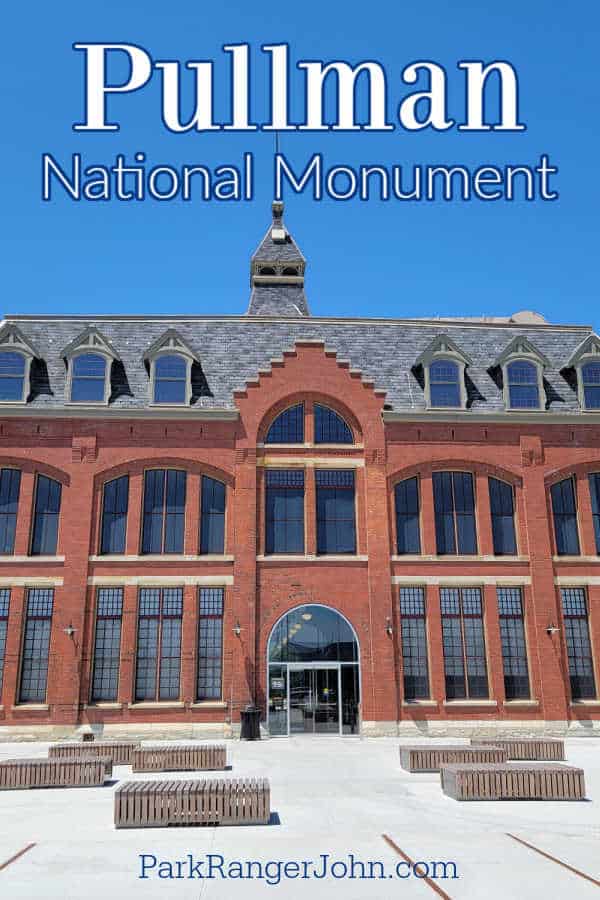
Pullman National Historical Park
Pullman National Historical Park preserves one of the first planned industrial communities in America.
The park explores the stories of the people who lived there and of the park's namesake, George M. Pullman, who designed the Pullman Sleeping railroad car and founded the town.
Is Pullman National Monument worth visiting?
Yes! The park has an amazing visitor center, and there is an easy drive through the community to see the historical buildings.
We really enjoyed our visit to the park. The park staff was honestly amazing! One of the gift shop employees spend 20 minutes talking to us about the history of the area and the historic house they were re-doing.
It was amazing hearing how someone is living in a historic house and making it their own.
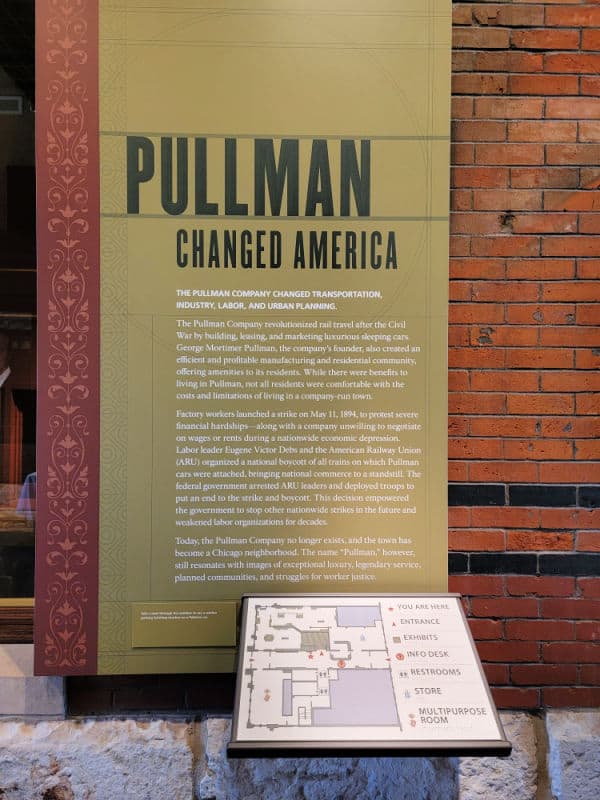
History of Pullman National Historical Park
The Town of Pullman, now known as the Pullman Historic District, was built around the Pullman Palace Car Company, founded by George M. Pullman in 1867.
The Pullman Historic District is home to many historic buildings, including the Pullman Palace Car Company administration building, workshops, and the Hotel Florence named after Pullman's daughter.
Pullman National Monument explores the influence of the Company Town on town planning and design. The National Monument explores American labor history as the town was the scene of a violent labor strike in 1894.
The Pullman Company
George Pullman made his fortune by designing a method to raise buildings to deal with the sanitation problem faced by the growing city of Chicago. Pullman’s design made him a wealthy man.
It was this wealth that allowed Pullman to establish the Pullman Company.
The Pullman Company manufactured luxury sleeper railroad cars that they would lease to the railroad along with trained employees.
The employees who accompanied the railcars as porters were mainly African Americans, usually former slaves. The porters became known as the Pullman Porters.
As demand for the expensive sleeper car’s increased, Pullman needed to build another factory and employ more staff.
Pullman bought 4,000 acres of land in the south of Chicago, between the Illinois Central rail line and Lake Calumet. Pullman decided to build new factories on the site, and housing for the employees of the Pullman Company.
Pullman was an advocate for employee betterment at a time when employees lived in dismal conditions and often labored in dangerous environments.
The Pullman Company Town
In the spring of 1880, construction began on Pullman Company Town. Solon Spencer Beman designed the town's buildings while the layout of the town was designed by landscape architect, Nathan Barret. Benzette Williams, the former superintendent of sanitation in Chicago, was hired by Pullman to develop its sewer system.
The town consisted of 1,300 housing units for the Pullman Companies employees, separated from the industrial center. The houses were built in rows and were generally more spacious than standard housing at the time. The houses even had indoor plumbing facilities
The town's buildings were constructed in the Queen Anne architectural style. The town was the first to be built entirely of brick. Pullman Company Town included several factories as well as the Florence Hotel and Greenstone Church.
The town also included Arcade Park, the only formal garden in the town, and Lake Vista, to break up the monotony of the brick buildings.
Although Pullman built houses for the employees of the Pullman Company, the employees did not live in them for free. Pullman charged the tenants of the Pullman Company Town rent to ensure he would make back the money he had invested in building the town.
By 1883 over 8,000 people lived in the Pullman Company Town. Many people who worked for the Pullman Company did not live in the planned industrial town because they felt the rent was too high. People felt that there was not enough freedom in the town and chose to live in the surrounding neighborhoods.
The Pullman Strike of 1894
In 1893 America experienced an economic depression which was called the Panic. During the depression, the railroad industry was particularly hard hit. The Panic of 1893 caused a decrease in demand for the Pullman Companies' luxurious sleeper cars.
The lower demand led to Pullman decreasing his workers' wages while maintaining the cost of rent which was deducted directly from their salaries. In response to the conditions many railroad workers faced, the American Railway Union (ARU) was founded. Membership of the ARU was open to all white employees of the railroad.
The employees of the Pullman Company tried to negotiate with Pullman for a wage increase but were ignored. On May 11th, 1894, against the advice of the ARU, the employees of the Pullman Company went on strike.
Initially, the strike had little impact as Pullman had planned for the company to survive a temporary halt in production.
The ARU called for a nationwide boycott by all ARU railroad workers of Pullman cars. The boycott massively disrupted rail traffic. Workers were replaced with strikebreakers, and Pullman cars were attached to mail cars.
The disruption of mail delivery and commerce meant that the Federal government could act by quoting the Sherman Anti-Trust Law of 1890. The government sent in U.S Marshalls and the army to end the boycott. The violence only increased with the presence of the army, leaving many dead in the railyards of South Chicago.
The Aftermath of the Strike
The strike and boycott ultimately failed in mid-July 1894. Pullman Company employees did not receive their requested wage increases. However, the strike set the stage for the Supreme Court to order the company to relinquish all non-industrial holdings. In 1898 the employees who rented homes in the town now had the option to purchase them.
The strike changed how the Federal government viewed strike action, making national strikes illegal.
The ARU set the stage for the unionization of African American railroad workers. The Pullman Porters, under the leadership of A. Philip Randolph began in 1925 with the founding of the Brotherhood of Railways and Airline Clerks. Randolph successfully negotiated higher wages and better job security.
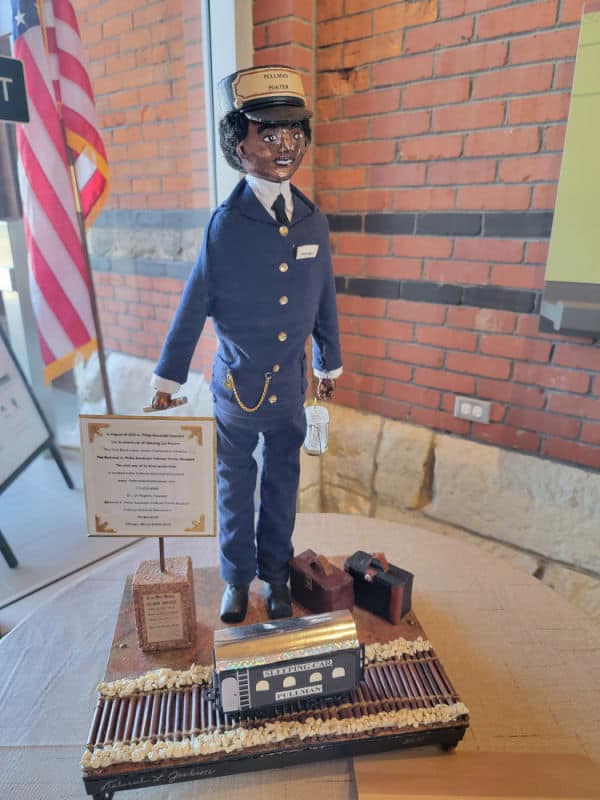
Things to know before your visit
Entrance fee
$0.00 - There is no entrance fee to visit the park.
Learn more about National Park Passes for parks that have an entrance fee.
$80.00 - For the America the Beautiful/National Park Pass. The pass covers entrance fees to all US National Park Sites and over 2,000 Federal Recreation Fee Sites for an entire year and covers everyone in the car for per-vehicle sites and up to 4 adults for per-person sites.

Buy your pass at this link, and REI will donate 10% of pass proceeds to the National Forest Foundation, National Park Foundation, and the U.S. Endowment for Forestry & Communities.
National Park Free Entrance Days -Mark your calendars with the five free entrance days the National Park Service offers annually.
Time Zone
Central Time Zone
Pets
Pets are allowed in the park but must be leashed. Pets are not allowed in park buildings.
Cell Service
We had great cell service while visiting the park.
Park Hours
The park is open from 9 am to 5 pm
Wi-Fi
Free Wi-Fi is available at the visitor information center.
Insect Repellent
Insect repellent is always a great idea when outdoors, especially if you are around any body of water.
We use Permethrin Spray on our clothes before our park trips.
Water Bottle
Make sure to bring your own water bottle and plenty of water with you. Plastic water bottles are not sold in the park.
Parking
The parking lot entrance on 111th Street (DO NOT drive through the historic stone worker's gate entrance).
The parking lot is large and located next to the visitor center.
Food/Restaurants
There are no restaurants within the park. There are restaurants nearby.
Gas
There are no gas stations within the park. There are multiple nearby.
Drones
Drones are not permitted within National Park Sites.
National Park Passport Stamps
National Park Passport stamps can be found in the visitor center.
Pullman NM is part of the 2022 Passport Stamp Set.
We like to use these circle stickers for park stamps so we don't have to bring our passport book with us on every trip.
The National Park Passport Book program is a great way to document all of the parks you have visitied.
You can get Passport Stickers and Annual Stamp Sets to help enhance your Passport Book.
Electric Vehicle Charging
There are over 2300 EV Charging stations in and around Chicago, Illinois.
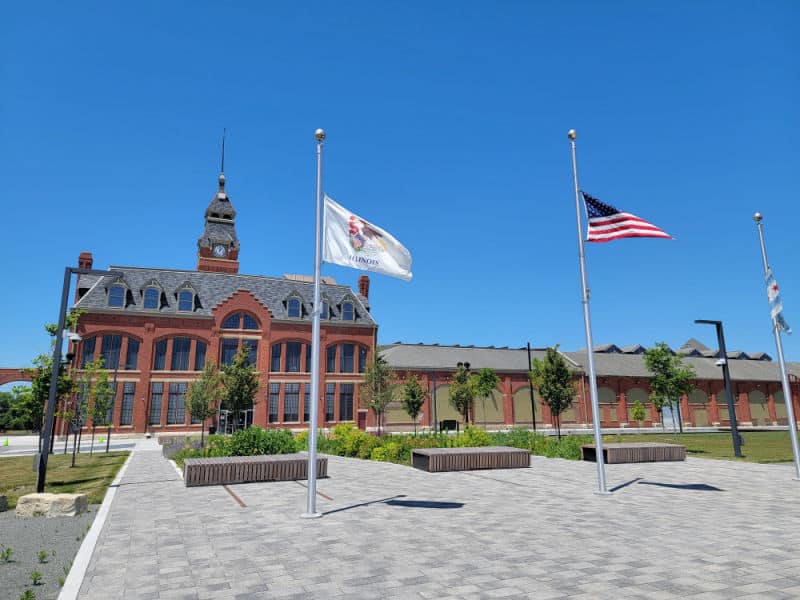
Details about Pullman National Historical Park
Size - 250 acres
Check out how the park compares to other National Parks by Size.
Date Established
February 19, 2015 - Designated a US National Monument
December 29, 2022 - Re-designated as a US National Historical Park
Visitation
Visitation numbers are not currently available for the park.
Learn more about the most visited and least visited National Parks in the US
National Park Address
610 E. 111th Street
Chicago, IL 60628
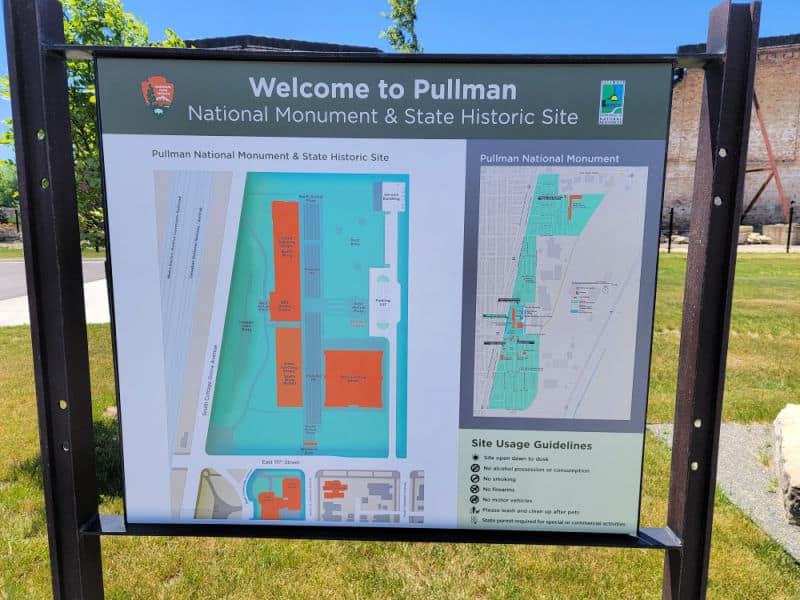
Where is Pullman National Historical Park?
Pullman NM is located in northeast Illinois south of Chicago.
The park is approximately 30 minutes south of Downtown Chicago.
Estimated distance from major cities nearby
- Milwaukee, WI - 106 miles
- Madison, WI - 161 miles
- Fort Wayne, IN - 153 miles
- Indianapolis, IN - 170 miles
- Toledo, OH - 236 miles
- Detroit, MI - 273 miles
- Cincinnati, OH - 283 miles
Estimated Distance from nearby National Park
Indiana Dunes National Park - 29.2 miles
Cuyahoga Valley National Park - 340 miles
Voyageurs National Park - 626 miles
Gateway Arch National Park - 293 miles
Mammoth Cave National Park - 380 miles
New River Gorge National Park - 538 miles
Where is the National Park Visitor Center?
Administration Clock Tower Building Visitor Center
Located - E. 111th St and S. Cottage Grove Ave.
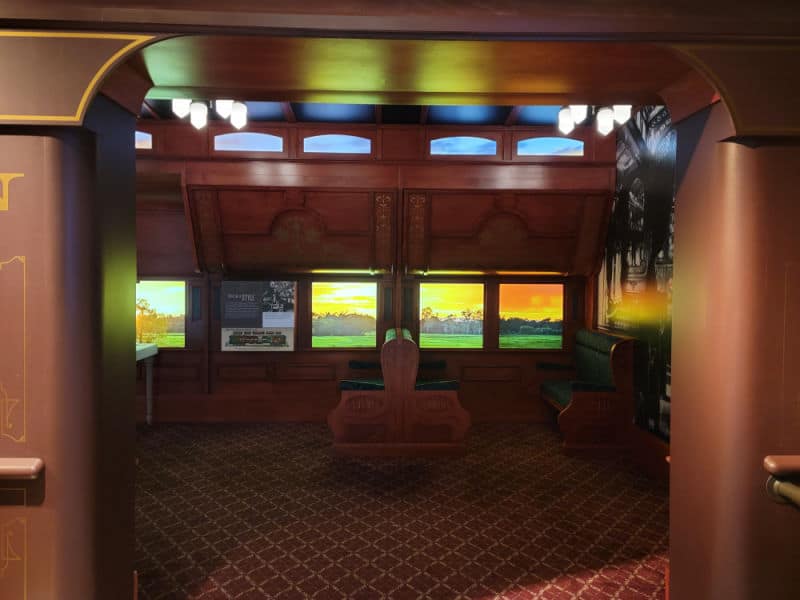
Getting to Pullman National Historical Park
Closest Airports
- Chicago O'Hare International Airport
- Chicago Midway International Airport
- Chicago Rockford International Airport
Driving Directions
The Administration Clock Tower Building Visitor Center is located at the corner of 111th Street and S. Cottage Grove Avenue.
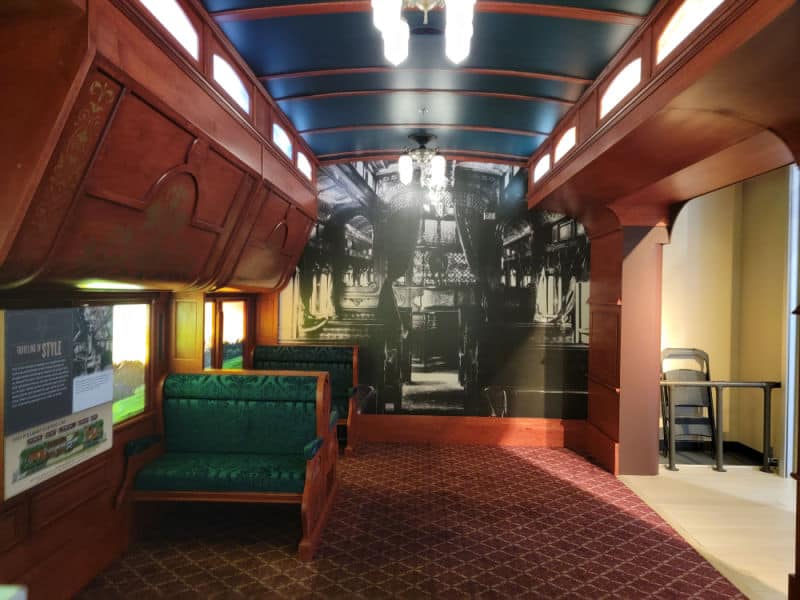
Best time to visit Pullman National Monument
The best time to visit depends on how you feel about snow and winter weather. If you are good with snow then the park is amazing year-round.
Weather and Seasons
Chicago experiences warm humid summers and cold snowy winters.
The warmest weather is from June 3rd to September 20th when the average daily high temperature is above 73 degrees.
The coldest weather is from December 2nd to March 9th with an average daily temperature below 43 degrees.
The snowiest weather normally occurs between December 2nd and March 19th with an average of at least 1 inch a month. February gets the most snow with an average of 3.2 inches.
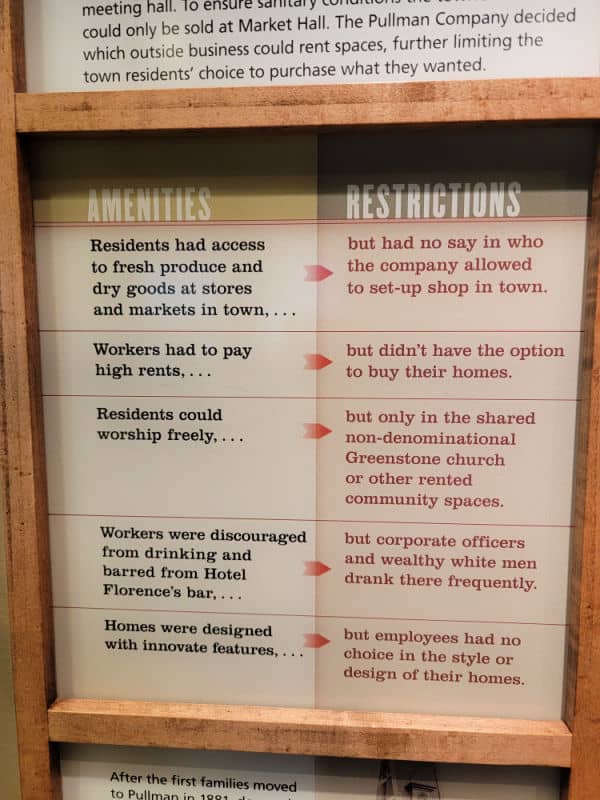
Best Things to do in Pullman National Monument
We suggest planning a couple of hours to visit the park and have time to enjoy the visitor center and driving tour.
This is one of our favorite things to do in Chicago with kids and adults. The park is fascinating and so worth spending time visiting.
Administration Clock Tower Building
The Administration Clock Tower Building was built in 1880. It was the manufacturing center of Pullman.
There are amazing exhibits in the visitor center museum that are well worth exploring.
There is also a small store with souvenirs and train merchandise.
Junior Ranger Program
The Junior Ranger program can be picked up from the front desk in the visitor center.
It can be completed while exploring the visitor center museum.
National A. Philip Randolph Pullman Porter Museum
The museum has exhibits focusing on African American Railroad employees along with A. Philip Randolph, the Pullman Porters, and the Brotherhood of Sleeping Car Porters.
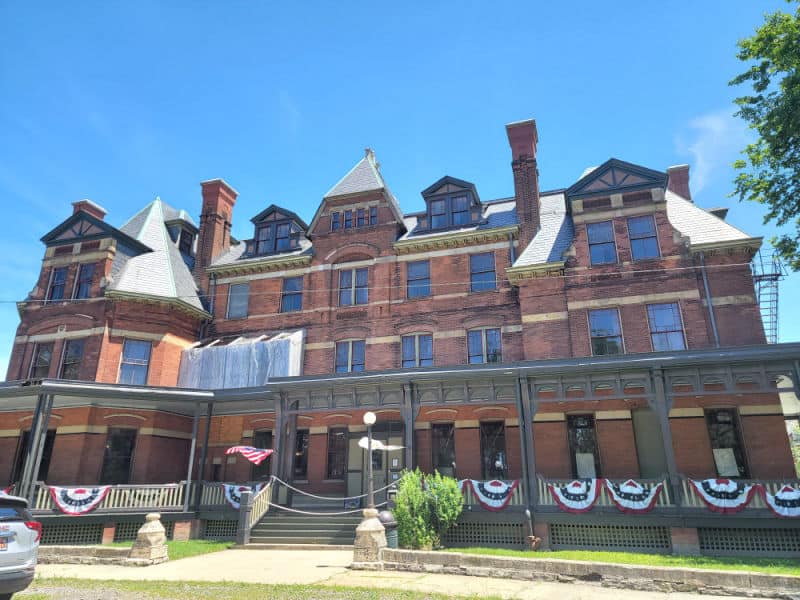
Hotel Florence
The former hotel was built in 1881 and was designed by architect Solon Spencer Beman.
Visitors can drive by the hotel or walk around the grounds. It is closed to the public but you can walk the Victorian verandah and look in the windows.
Greenstone Church
The Greenstone Church was built in 1882 as part of the Pullman Company Town. The Greenstone United Methodist Church was also designed by Solon Beman.
Historic Pullman Workers Homes
Across from the visitor center you can drive through the neighborhood and see the historic Pullman workers homes.
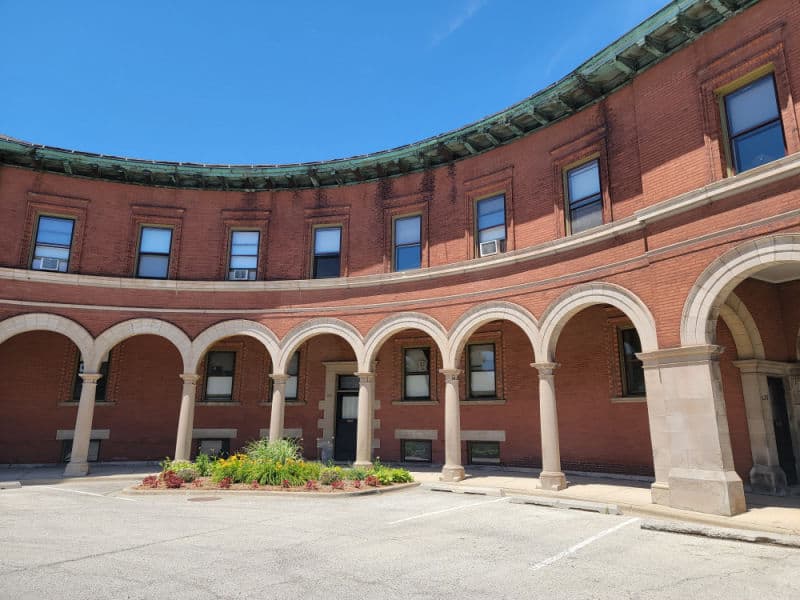
Hiking in Pullman National Monument
There are no hiking trails within the park. You can walk around the grounds and surrounding neighborhoods.
How to beat the crowds in Pullman National Monument?
We did not experience any crowds while visiting the park. The museum has space to be able to move around if people are nearby.
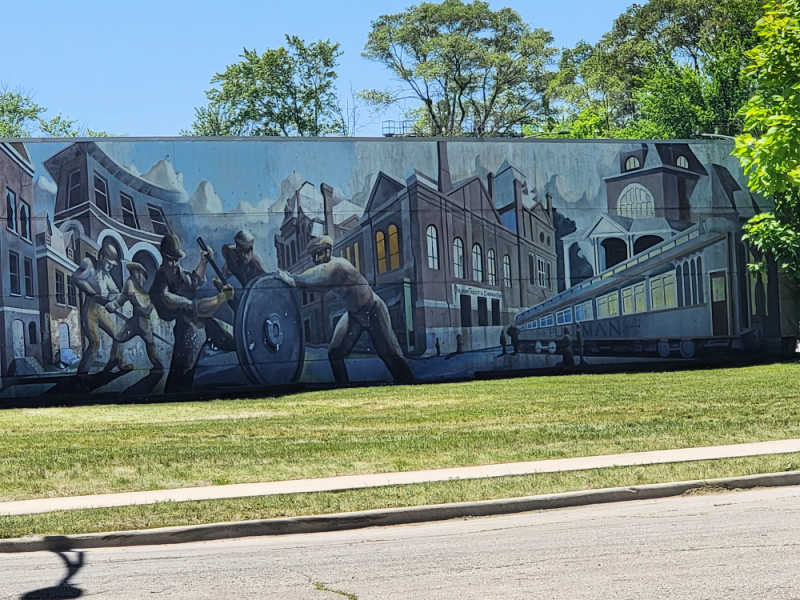
Where to stay when visiting Pullman National Historical Park
There are no National Park Lodges within the park.
Nearby lodging includes:
Sophy Hyde Park - 4 star hotel near University of Chicago, Sophy Hyde Park provides a terrace, a fireplace in the lobby, and a bar. Be sure to enjoy a meal at Mesler, the onsite restaurant. In addition to a gym and a 24-hour business center, guests can connect to free in-room Wi-Fi.
Hyatt Place Chicago-South - 3 star hotel close to University of Chicago, Hyatt Place Chicago-South/University Medical Center provides a free breakfast buffet, a coffee shop/cafe, and dry cleaning/laundry services. In addition to a bar and a 24-hour gym, guests can connect to free in-room Wi-Fi.
Hilton Chicago/Oak Lawn - 3.5 star hotel. Look forward to a coffee shop/café, dry cleaning/laundry services, and a bar at Hilton Chicago/Oak Lawn. Free in-room Wi-Fi is available to all guests, along with a 24-hour gym and a business center.
Waldorf Astoria Chicago - 5 star hotel. Close to Michigan Avenue and Chicago Riverwalk, Waldorf Astoria Chicago provides a free grocery shopping service, a terrace, and dry cleaning/laundry services. Treat yourself to a body scrub, a Swedish massage, or a body treatment at the onsite spa. The onsite restaurant, The Brasserie, features American cuisine and brunch. Aerobics classes and Pilates classes are offered at the gym; Waldorf Astoria Chicago also has a fireplace in the lobby, a bar, and a business center. Free in-room Wi-Fi is available to all guests, along with babysitting and a steam room.
21c Museum Hotel Chicago - Close to Michigan Avenue and Chicago Riverwalk, 21c Museum Hotel Chicago provides dry cleaning/laundry services, a 24-hour gym, and a 24-hour business center. Treat yourself to a hot stone massage, a body wrap, or a body scrub at Soothe, the onsite spa. The onsite restaurant, Lure Fishbar, features seafood. Stay connected with free in-room Wi-Fi.
Click on the map below for additional lodging and vacation rental options.
Camping
There are no National Park Campgrounds within the park.

For a fun adventure check out Escape Campervans. These campervans have built in beds, kitchen area with refrigerators, and more. You can have them fully set up with kitchen supplies, bedding, and other fun extras. They are painted with epic designs you can't miss!
Escape Campervans has offices in Vancouver, Seattle, Portland, San Francisco, Las Vegas, Los Angeles, Phoenix, Salt Lake City, Denver, New York, and Orlando
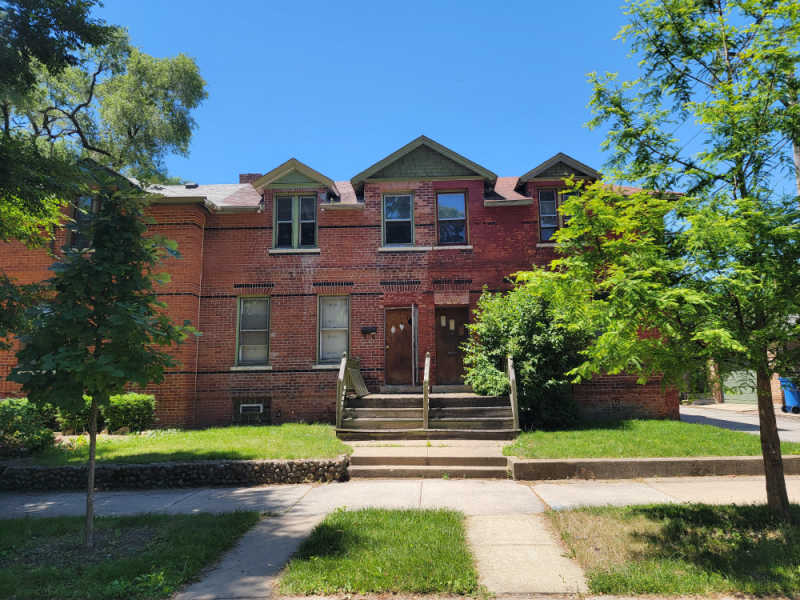
Parks Near Pullman National Historical Park
Lincoln Home National Historic Site
George Rogers Clark National Historical Park
Herbert Hoover National Historic Site
River Raisin National Battlefield
Perry's Victory Memorial
Effigy Mounds National Monument
Check out all of the National Parks in Illinois along with neighboring Indiana National Parks, Iowa National Parks, National Parks in Michigan, National Parks in Kentucky, Missouri National Parks, and Wisconsin National Parks
Make sure to follow Park Ranger John on Facebook, Instagram, Pinterest, and TikTok





Leave a Reply